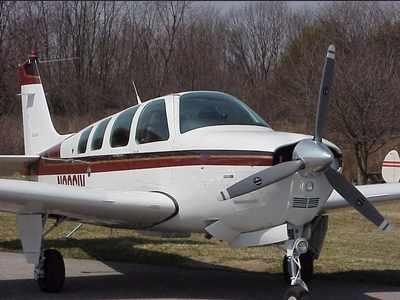Pilot Apparently Did Not Properly Switch Tanks During Approach, Leading To Fuel Starvation
Switching tanks during flight is a routine task. Many flight management systems now remind pilots to switch tanks at regular intervals, but it is a task that should not be taken for granted.

Failure to properly switch tanks was listed by the NTSB as the probable cause of an accident that occurred near Charlottesville, VA on December 18, 2013. In the report, the board said that about 1 hour 30 minutes into the cross-country flight that originated at Woodbine Municipal Airport (KOBI), Woodbine, New Jersey, en route to Charlottesville-Albemarle Airport (KCHO), Charlottesville, Virginia, the pilot reported a loss of engine power while on approach to KCHO. The pilot was unable to glide the airplane, a Beech A36TC, to the airport, and it subsequently impacted trees and the ground in a residential area about 3 miles from the airport.
The pilot had completely fueled the airplane before departure, and adequate fuel remained onboard at the time of the engine power loss. Examination of the wreckage revealed that the three-position fuel selector handle was positioned in between the left and right tank detents, which would have restricted fuel flow to the engine. A subsequent test run of the engine was performed successfully, and no evidence of mechanical malfunctions or failures was found that would have precluded normal engine operation.
The airplane’s before landing checklist instructed the pilot to move the fuel selector valve to the fuller fuel tank for landing. It is likely that, while on approach and preparing the airplane to land, the pilot switched fuel tanks and then inadvertently failed to ensure that the fuel selector handle was fully positioned in the detent of the fuel tank he intended to select. During the impact sequence, the pilot’s shoulder harness separated, and his cause of death was attributed to blunt force trauma to the torso. The autopsy also reported a near-complete transection of the thoracic aorta. If the pilot’s shoulder harness had remained intact, the risk of traumatic transection of the aorta would have been significantly reduced and, thus, the pilot likely would only have incurred serious, not fatal, injuries.

Examination of the shoulder harness revealed that the belt had separated about 31 inches from where the fastener connected to the lapbelt. The location of the separation corresponded approximately to where the belt would pass through the D-ring behind the pilot’s shoulder. The belt separation area exhibited about 0.25-inch fraying on one edge and 1.25-inch fraying on the other edge along a total area of about 7.75 inches. The shoulder harness manufacturer’s component maintenance manual states that the acceptable limit for webbing fraying was a 6-inch area. Microscopic examination of the separated fibers revealed that they had separated in overload.
The airplane’s maintenance manual and a Federal Aviation Administration advisory circular contained information pertaining to the inspection of shoulder harnesses during 100-hour or annual inspections. The accident airplane’s most recent annual inspection was completed about 1 month before the accident.
Although the pilot’s toxicology report was positive for pain medication, the medication was not detected in his blood; thus, it is likely that the pilot took the medication many hours before the accident flight and was not impaired during the flight.
The NTSB determined that the probable cause(s) of this accident were the pilot’s failure to position the fuel selector handle in a fuel tank detent, which resulted in a total loss of engine power due to fuel starvation. Contributing to the pilot’s fatal injuries was the separation of his shoulder harness due to overload in an area of excessive fraying.
(Image from file. Not accident airplane)
 Airborne-Flight Training 05.09.24: ERAU at AIAA, LIFT Diamond Buy, Epic A&P
Airborne-Flight Training 05.09.24: ERAU at AIAA, LIFT Diamond Buy, Epic A&P ANN's Daily Aero-Term (05.07.24): Hazardous Weather Information
ANN's Daily Aero-Term (05.07.24): Hazardous Weather Information Aero-News: Quote of the Day (05.07.24)
Aero-News: Quote of the Day (05.07.24) NTSB Final Report: Cessna 150
NTSB Final Report: Cessna 150 Aero-News: Quote of the Day (05.08.24)
Aero-News: Quote of the Day (05.08.24)




